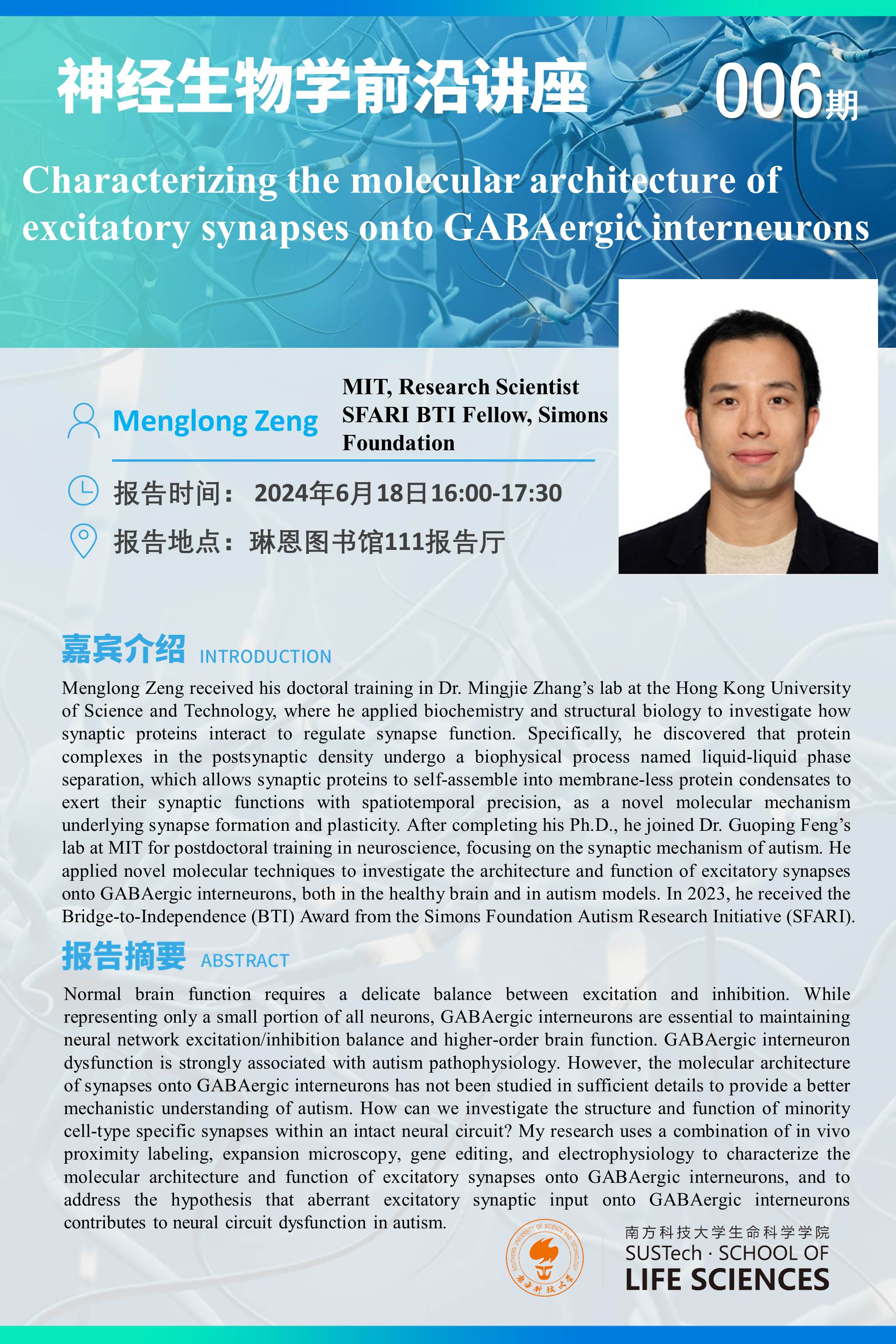
主讲人: 曾梦龙 Research Scientist (麻省理工学院)
时间: 2024年6月18日(周二)下午16:00-17:30
地点: 琳恩图书馆111报告厅
题 目:Characterizing the molecular architecture of excitatory synapses onto GABAergic interneurons
主 讲:曾梦龙 Research Scientist
时 间:2024年6月18日(周二)下午16:00-17:30
地 点:琳恩图书馆111报告厅
嘉宾简介:
Menglong Zeng received his doctoral training in Dr. Mingjie Zhang’s lab at the Hong Kong University of Science and Technology, where he applied biochemistry and structural biology to investigate how synaptic proteins interact to regulate synapse function. Specifically, he discovered that protein complexes in the postsynaptic density undergo a biophysical process named liquid-liquid phase separation, which allows synaptic proteins to self-assemble into membrane-less protein condensates to exert their synaptic functions with spatiotemporal precision, as a novel molecular mechanism underlying synapse formation and plasticity. After completing his Ph.D., he joined Dr. Guoping Feng’s lab at MIT for postdoctoral training in neuroscience, focusing on the synaptic mechanism of autism. He applied novel molecular techniques to investigate the architecture and function of excitatory synapses onto GABAergic interneurons, both in the healthy brain and in autism models. In 2023, he received the Bridge-to-Independence (BTI) Award from the Simons Foundation Autism Research Initiative (SFARI).
报告摘要:
Normal brain function requires a delicate balance between excitation and inhibition. While representing only a small portion of all neurons, GABAergic interneurons are essential to maintaining neural network excitation/inhibition balance and higher-order brain function. GABAergic interneuron dysfunction is strongly associated with autism pathophysiology. However, the molecular architecture of synapses onto GABAergic interneurons has not been studied in sufficient details to provide a better mechanistic understanding of autism. How can we investigate the structure and function of minority cell-type specific synapses within an intact neural circuit? My research uses a combination of in vivo proximity labeling, expansion microscopy, gene editing, and electrophysiology to characterize the molecular architecture and function of excitatory synapses onto GABAergic interneurons, and to address the hypothesis that aberrant excitatory synaptic input onto GABAergic interneurons contributes to neural circuit dysfunction in autism.